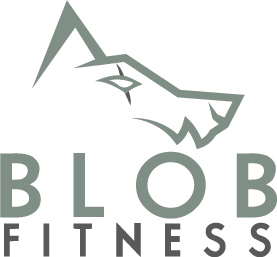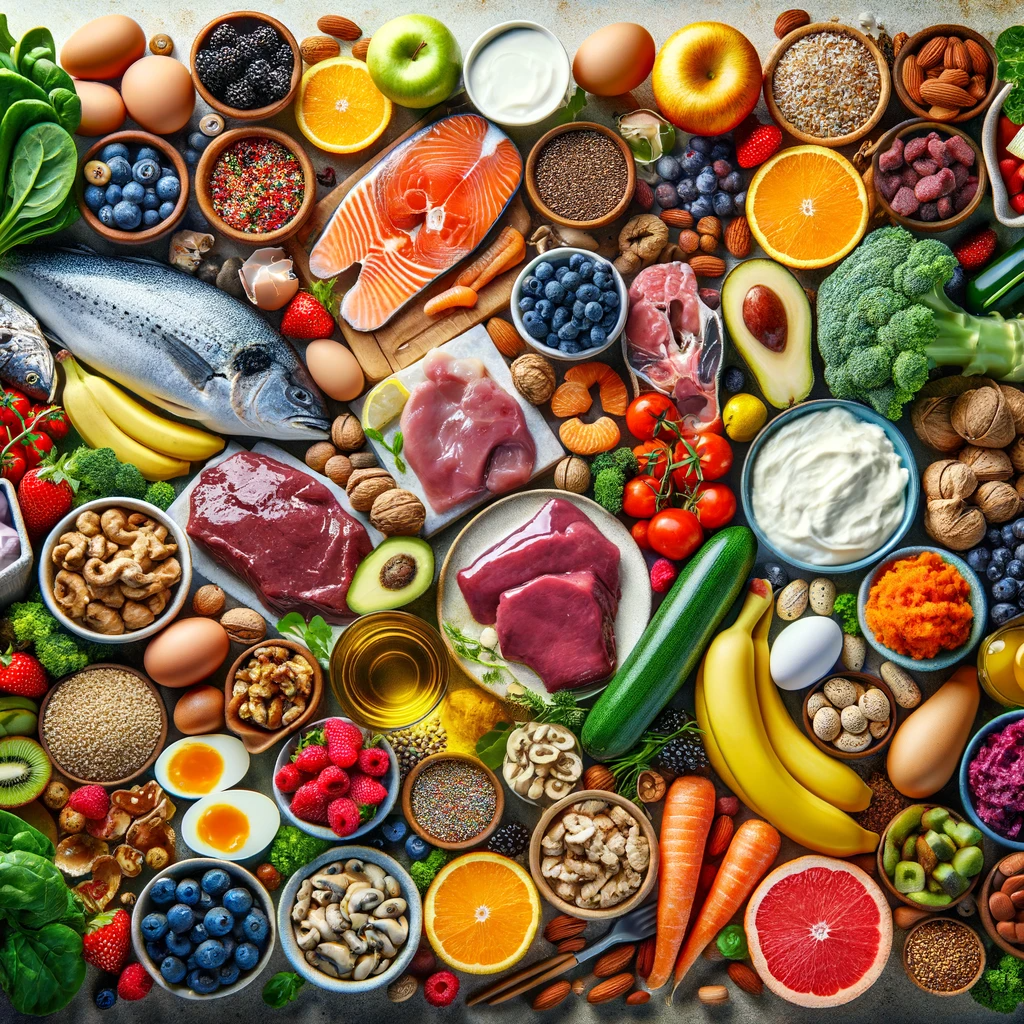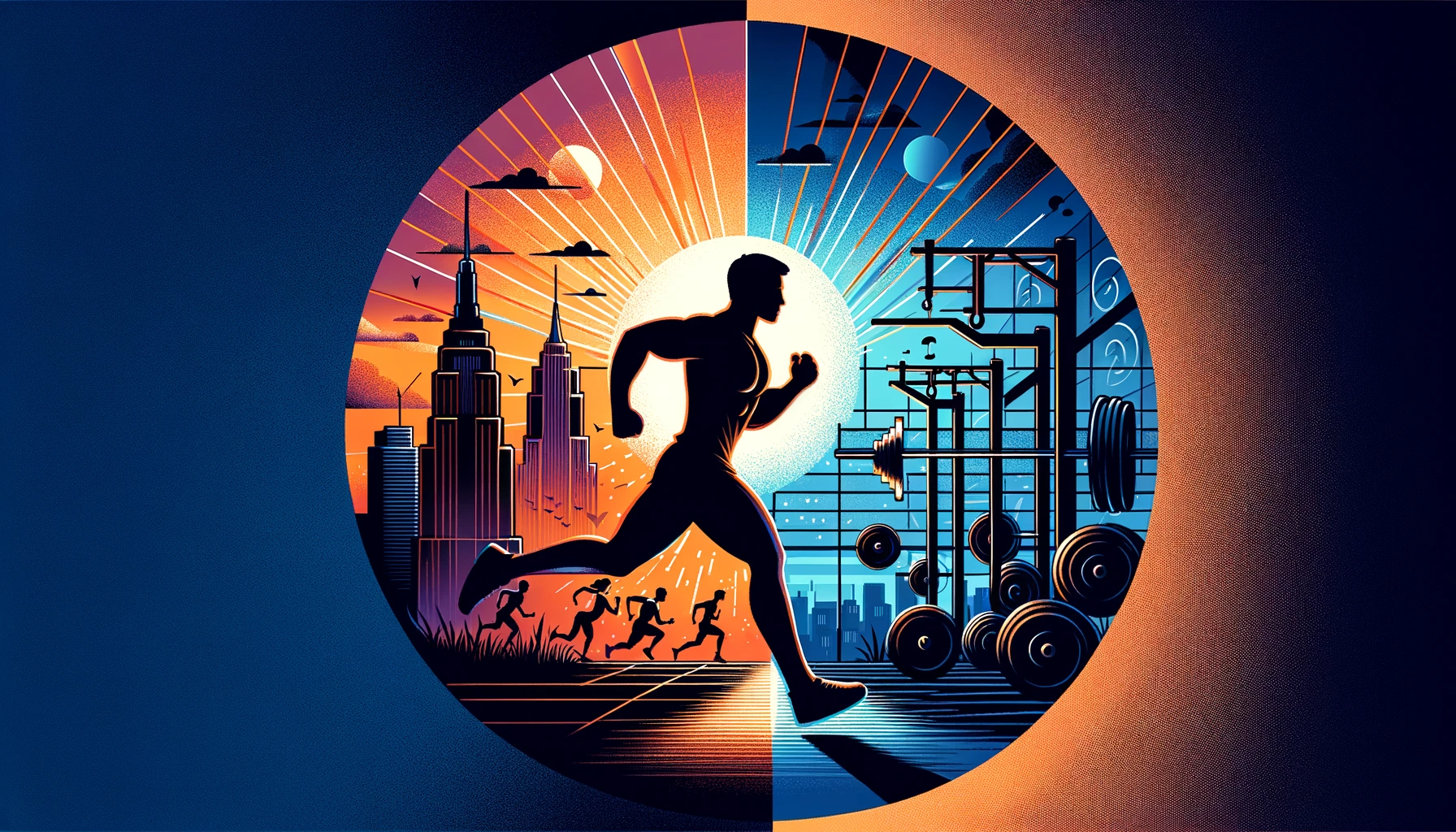You may heard the phrase “Nutrient Dense Diet” before.
It’s tossed around plenty in social media but it’s never explained how to go about creating a nutrient dense diet to fit your needs.
This article delves into the concept of a nutrient dense diet, a key player in the realm of healthy eating. We’ll also be discussing how to go about incorporating foods into your diet that work specifically for you.
Let’s dive into it.
What is a Nutrient Dense Diet?
A nutrient dense diet focuses on foods that offer a high concentration of vitamins, minerals, and other beneficial nutrients relative to their caloric content.
These foods include fruits, vegetables, whole grains, lean proteins, and healthy fats, providing more “bang for your buck” in terms of nutrient value.
The Importance of a Nutrient Dense Diet
Today’s fast-paced lifestyle often leads to a reliance on processed and convenience foods, which are typically low in essential nutrients.
This shift has resulted in deficiencies in key vitamins and minerals, making a nutrient dense diet more crucial than ever.
Nutrient dense foods, packed with vitamins, minerals, and antioxidants, counterbalance the trend by providing the body with the essential nutrients it often lacks due to modern dietary habits.
These foods not only fill nutritional gaps but also offer numerous health benefits.
They improve immune function, support healthy aging, and reduce the risk of chronic diseases like obesity, heart disease, and diabetes.
By focusing on these nutrient powerhouses, we can combat the effects of nutrient poor diets and promote overall health and wellness.
Micronutrients: Food Sources vs Supplements
You may be saying though, that I can just supplement with a multivitamin (or a specific vitamin to fit your needs). Although in some cases that can work, we’re going to discuss why that isn’t always the best thing to do.
While supplements can play a role in filling nutritional gaps, obtaining micronutrients from whole foods is preferable.
Foods offer a complex matrix of nutrients that work synergistically, enhancing absorption and utilization by the body. This holistic approach is something supplements alone cannot replicate.
Plus, getting your nutrients from foods typically have micronutrients that tend to work well together.
Foods
For example, let’s take Salmon.
Salmon is a decent food source with Vitamin D in it.
When taking Vitamin D, it’s important to take it with a fatty food source. Salmon itself is a fatty food source so that benefits in the absorption of vitamin D. Salmon also has some magnesium in it too.
You will notice this trend that the foods you eat will usually have an optimal blend of micro nutrients that work together fairly well. It’s not always the case though.
Supplements
Now, with supplements, if you take let’s say Vitamin D by itself. You are missing key nutrients in magnesium and Vitamin K2.
What does this mean? You need to now take supplements for magnesium and K2 as well.
There is nothing wrong with this, but it causes you to take more supplements overall which can add up in costs.
Key Micronutrients for Optimal Health
Let’s go over some micronutrients you should focus on:
-
Vitamin A: Essential for vision, immune function, and skin health. Found in carrots, sweet potatoes, and dark leafy greens.
-
B Vitamins: A group of vitamins that aid in energy production, brain function, and cell metabolism. Includes B1 (thiamine), B2 (riboflavin), B3 (niacin), B5 (pantothenic acid), B6, B7 (biotin), B9 (folate), and B12. Sources include whole grains, meats, and dark leafy greens.
-
Vitamin C: Important for immune function, skin health, and wound healing. Abundant in citrus fruits, strawberries, and bell peppers.
-
Vitamin D: Crucial for bone health and immune function. Can be synthesized in the skin from sunlight and found in fatty fish and fortified foods.
-
Vitamin E: An antioxidant that protects cells from damage. Found in nuts, seeds, and vegetable oils.
-
Vitamin K: Necessary for blood clotting and bone metabolism. Found in green leafy vegetables, fish, meat, and dairy.
-
Zinc: Supports immune function, wound healing, and DNA synthesis. Found in meat, shellfish, legumes, and nuts.
-
Magnesium: Involved in hundreds of biochemical reactions in the body, including muscle and nerve function, blood glucose control, and blood pressure regulation. Found in nuts, seeds, whole grains, and green leafy vegetables.
-
Sodium: Essential for fluid balance, nerve transmission, and muscle function. Found in salt, processed foods, and naturally in some vegetables.
-
Potassium: Crucial for heart function, muscle contractions, and maintaining a healthy blood pressure. Found in bananas, potatoes, beans, and nuts.
-
Selenium: Plays a key role in metabolism and thyroid function. Found in Brazil nuts, seafood, and meats.
-
Iron: Vital for the formation of red blood cells and transportation of oxygen throughout the body. Found in red meat, beans, and fortified cereals.
-
Calcium: Essential for bone health and plays a role in muscle function and nerve signaling. Found in dairy products, green leafy vegetables, and fortified foods.
-
Iodine: Important for thyroid health. Found in iodized salt, seafood, and dairy products.
-
Omega-3 Fatty Acids: Essential for heart and brain health. Found in fatty fish, flaxseeds, and walnuts.
There is plenty to focus on here.
However, you will be surprised how certain foods have a decent combination of these nutrients.
Foods That Are Nutrient Dense
So we understand the importance of a nutrient dense diet and we have a good understanding of the nutrients too.
Let’s now go over nutrient dense foods. This isn’t a complete list as there are many foods I can probably cover.
However, I’ll do my best to list the most accessible foods that are nutrient dense that you can incorporate into your diet.
-
Oysters: Rich in zinc, vitamin B12, and selenium. Oysters are excellent for immune support, brain health, and metabolism.
-
Liver (particularly beef liver): Packed with vitamin A, iron, B vitamins, and copper. Liver supports blood health, energy production, and vitamin A metabolism.
-
Salmon: High in omega-3 fatty acids, protein, B vitamins, and potassium. Beneficial for heart health, brain function, and inflammation reduction.
-
Steak: Provides high-quality protein, B vitamins, iron, and zinc. Essential for muscle building, energy production, and immune health.
-
Fruits (such as berries, oranges, and bananas):
- Berries: Antioxidant-rich, high in vitamin C and fiber. Support heart health and digestion.
- Oranges: Excellent source of vitamin C and fiber. Promote immune function and skin health.
- Bananas: High in potassium and vitamin B6. Support heart health and energy levels.
-
Eggs: Contain high-quality protein, B vitamins, and choline. Crucial for brain health, muscle building, and overall nutrient intake.
-
Vegetables (such as spinach, kale, and sweet potatoes):
- Spinach: Rich in iron, magnesium, calcium, and vitamins A, C, and K. Supports bone health and muscle function.
- Kale: High in vitamins A, C, K, and antioxidants. Promotes heart health and immune function.
- Sweet Potatoes: Packed with beta-carotene, vitamins A and C, and fiber. Beneficial for eye health and blood sugar regulation.
-
Fermented Foods (such as Natto and kimchi):
- Natto: Rich in probiotics, vitamin K2, and protein. Supports gut health and bone health.
- Kimchi: Contains probiotics, vitamins A and C, and antioxidants. Promotes digestive health and immune function.
- Fermented Dairy Products (such as Kefir and Yogurt):
- Kefir: Rich in probiotics, protein, B vitamins, potassium, and calcium. Supports gut health, bone health, and immune function. Known for its diverse probiotic strains.
- Yogurt: Contains protein, calcium, B vitamins, and probiotics. Promotes bone health, and digestive health, and can aid in maintaining a healthy weight. Especially beneficial for gut health when it includes live cultures.
- Nuts and Seeds (like almonds and chia seeds):
- Almonds: High in vitamin E, magnesium, and healthy fats. Support heart health and brain function.
- Chia Seeds: Rich in omega-3 fatty acids, fiber, and protein. Beneficial for heart health and digestive health.
-
Whole Grains (such as quinoa and oats):
- Quinoa: Complete protein source, high in fiber and B vitamins. Supports muscle health and energy production.
- Oats: Rich in fiber, protein, and magnesium. Promote heart health and blood sugar control.
Incorporating Into Your Diet
Now that we have a nutrient dense list of foods, let’s go over how to incorporate these foods.
-
Start Slow: Choose one or two nutrient dense foods from the list that appeal to you or fit easily into your current diet. Incorporate these foods into your meals a few times a week. For example, if you’re not used to eating fish, try adding salmon to your menu once or twice a week.
-
Keep a Food Log: Document what you eat and how you feel in a food diary. This practice is not just about tracking your intake but also about observing how different foods impact your well-being. Note any changes in your energy levels, digestion, mood, and overall health.
-
Evaluate Your Responses: After consistently consuming the new food for a while, assess how you feel. If you notice positive changes, such as more energy or better digestion, continue including it in your diet. However, if a particular food doesn’t agree with you or causes discomfort, consider eliminating it.
-
Understanding Subtle Effects: Sometimes, the benefits of nutrient dense foods are not immediately noticeable. A lack of dramatic changes doesn’t mean the food isn’t beneficial. Many nutrients work in the background, supporting long-term health and preventing future issues. If food doesn’t have negative effects, keeping it in your diet can still contribute positively to your overall nutrient intake.
-
Gradually Diversify: Once you’re comfortable with one new food, try introducing another. Gradually diversifying your diet this way ensures a broad range of nutrients and keeps your meals interesting.
Example of a Nutrient Dense Diet
Breakfast: Scrambled Eggs with Spinach and Avocado
- Eggs: Protein and fats, vitamins B2 and B12, choline.
- Spinach: Iron, magnesium, vitamins A, C, and K.
- Avocado: Healthy fats, fiber, vitamins E and C.
Mid-Morning Snack: Greek Yogurt with Berries and Chia Seeds
- Greek Yogurt: Protein, calcium, probiotics.
- Berries: Antioxidants, vitamin C, fiber.
- Chia Seeds: Omega-3 fatty acids, fiber, protein.
Lunch: Salmon Salad
- Salmon: Omega-3 fatty acids, protein, B vitamins.
- Mixed Greens: Vitamins A, C, K, iron, fiber.
- Almonds: Vitamin E, magnesium, protein.
Afternoon Snack: Nuts and Seeds Mix
- Mixed Nuts (Almonds, Walnuts): Protein, healthy fats, vitamin E.
- Seeds (Pumpkin, Sunflower): Magnesium, zinc, protein.
Dinner: Grilled Steak with Roasted Sweet Potatoes and Steamed Broccoli
- Steak: Protein, iron, B vitamins.
- Sweet Potatoes: Beta-carotene (vitamin A), vitamin C, fiber.
- Broccoli: Vitamins C and K, fiber, folate.
Evening Snack: Kefir with a Banana
- Kefir: Probiotics, protein, calcium.
- Banana: Potassium, vitamin B6, vitamin C.
Conclusion
A nutrient dense diet can be extremely beneficial for you and can even help you ditch taking vitamins altogether if done correctly.
When incorporating foods, it’s important to log them and note any dietary effects. Some foods may agree with you more than others.
For example, Liver for me gave me massive headaches. So I needed to take it out of my diet. Whereas something like Kefir often makes me feel satiated and has positive effects overall for my health.
Take note of these things and notice how it plays out for you.




